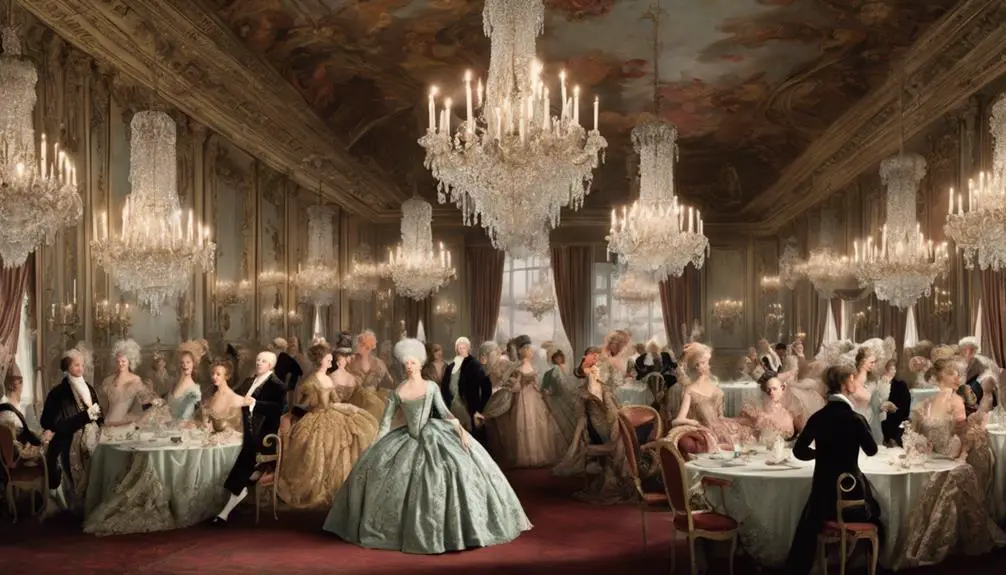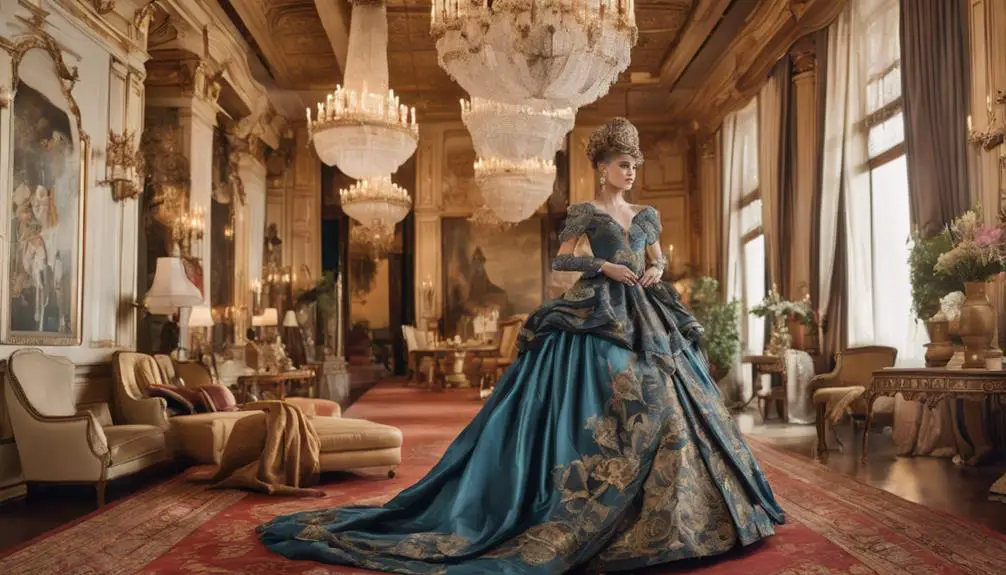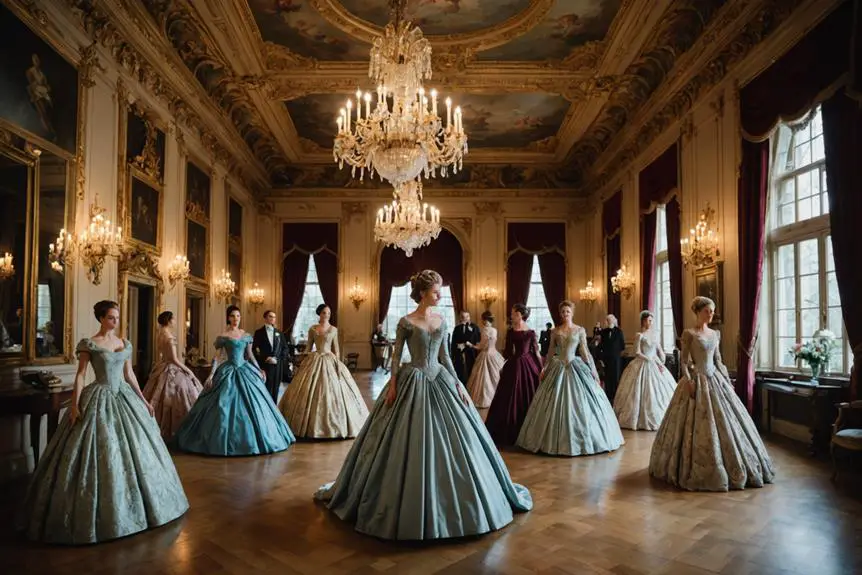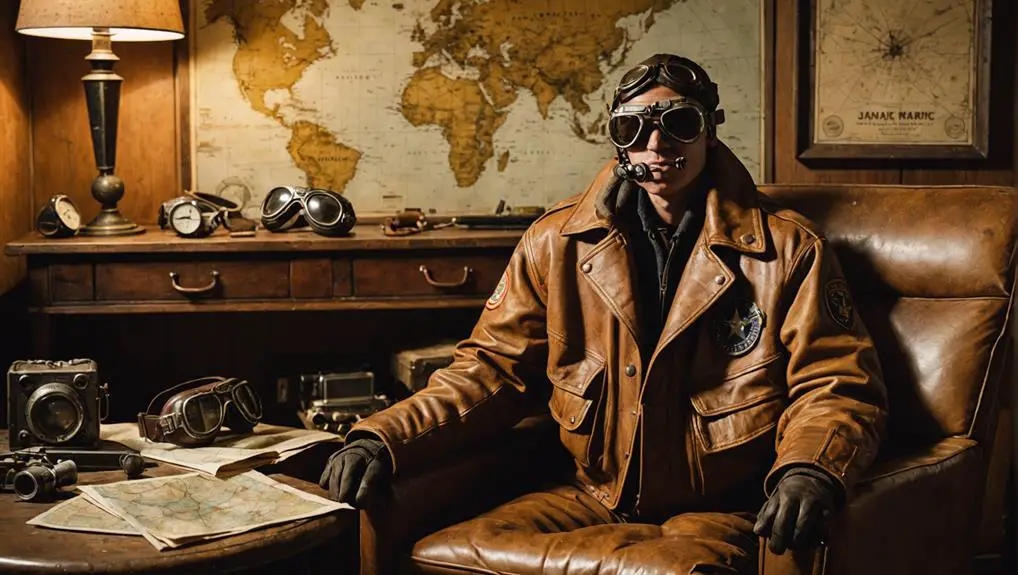When you consider the ball gown, it's fascinating to see how this garment has evolved from its origins in the Middle Ages, where it served as a marker of social status, to the lavish designs of figures like Marie Antoinette in the 18th century. Each era brought its own influences, reshaping silhouettes and fabric choices in response to societal shifts. As you explore this evolution, you'll uncover how these gowns not only reflect fashion trends but also embody cultural significance, hinting at the powerful stories woven into their fabric. What might these stories reveal about our own contemporary choices?
Historical Origins of Ball Gowns

Exploring the historical origins of ball gowns reveals their significance as symbols of social status dating back to the Middle Ages. Initially, these exquisite evening dresses were integral to formal events, allowing the aristocracy to showcase their wealth and refinement. During the 18th century, the opulence of ball gowns reached new heights, particularly with figures like Marie Antoinette, who famously ordered up to 300 gowns annually. These extravagant gowns featured elaborate designs and luxurious fabrics, emphasizing both individuality and social standing.
By the 19th century, the evolution of ball gowns showcased a dramatic shift in silhouette. The change from the high Empire silhouette of the Regency Era to the hourglass figure characteristic of the Victorian era signified deeper societal changes in women's fashion. Gowns became increasingly elaborate, with skirts shaped by layers of petticoats and bustles that created a striking visual impact. However, the costs of these intricate creations could rival the price of a house, reflecting the immense labor involved in their hand-sewing and embellishment.
The introduction of sewing machines in the 1850s revolutionized gown production, making it possible to craft more intricate designs while also increasing availability to the growing middle class. This technological advancement marked a turning point, democratizing access to fashion and ensuring that ball gowns, once reserved for the elite, could become a staple for various social gatherings. In this way, ball gowns not only reflect fashion trends but also encapsulate the dynamic interplay of class and culture throughout history.
Evolution of Design and Styles
Over the years, ball gown designs have undergone remarkable transformations, keeping pace with changing fashion trends and societal norms. In the mid-19th century, the introduction of the sewing machine revolutionized the production of ball gowns, allowing for intricate designs and improved quality. During the 1860-1864 period, you'd find gowns featuring a distinct bell shape, characterized by added fullness at the back, while pleating techniques enhanced their elegance.
As the 1870s rolled in, the silhouette shifted to narrower skirts, emphasizing the back, which led to the introduction of bustles that created even more fullness and drama. Fast forward to the 1950s, when public events like charity balls gained popularity. Designers responded by crafting extravagant ball gowns, often with nipped-in waistlines and flowing skirts, making evening gowns that were a sight to behold. Icons like Christian Dior pushed the boundaries of design, blending tradition with modern flair, resulting in breathtaking creations.
Today, modern ball gowns reflect a fusion of diverse materials and innovative techniques, embodying current fashion trends while still honoring classic elements. Whether you're drawn to the romantic fullness of yesteryears or the sleek lines of contemporary design, the evolution of the ball gown is a reflection of the art of dressmaking. Each gown tells a story, capturing the essence of its time and inviting you to be a part of its ongoing legacy.
Cultural Significance and Traditions

The evolution of ball gowns has not only shaped their design but also their role in cultural practices and traditions. Ball gowns have long been at the heart of formal events, such as debutante balls, where young women are introduced into society. Originating in the mid-19th century, these extravagant gatherings featured elaborate gowns that symbolized status and grace. You can find regional variations in the U.S., where unique elements like jeweled crowns in New Orleans and diverse styles in Texas reflect local customs and traditions.
In Latin America, Quinceañera celebrations mark the progression into womanhood at a girl's 15th birthday, often showcasing brightly colored gowns resembling ball gowns. This event highlights the cultural significance of dress, embracing the journey from childhood to adulthood. The tradition of wearing ball gowns has continued to evolve, now appearing in modern contexts like weddings and red carpet events, mirroring the exclusivity and grandeur associated with historical aristocratic balls.
Today, ball gowns remain a symbol of fantasy and escapism in contemporary culture, evoking images of fairy tales and enchanting moments. When worn, they create a "halo of seclusion" around the wearer, attracting admiration and awe at formal celebrations. Whether you're attending a debutante ball, a Quinceañera, or another grand event, the ball gown continues to play a pivotal role in showcasing elegance, cultural heritage, and the celebratory spirit of significant life milestones.
Iconic Gowns and Influential Figures
Throughout fashion history, iconic gowns and influential figures have shaped the way we perceive ball gowns today. Take Marie Antoinette, for instance. Known for her extravagant style, she famously ordered around 300 gowns each year, showcasing the opulence of 18th-century fashion. This era laid the groundwork for future designs, emphasizing the importance of elegance and extravagance. The intricate details of her gowns were often enhanced by embellishments, making them perfect candidates for tailoring vintage styles that remain relevant today.
Fast forward to the 19th century, when Charles Frederick Worth established the House of Worth, revolutionizing the industry by introducing the concept of the designer gown. His creations became essential for high society, setting a precedent that continues to resonate today.
Then, there's Grace Kelly. Her iconic 1956 wedding gown, designed by Helen Rose, became a symbol of timeless elegance and sophistication, influencing bridal fashion for generations to come. In the same vein, actress Audrey Hepburn's portrayal of Holly Golightly in the 1961 film "Breakfast at Tiffany's" featured a stunning black ball gown by Givenchy, solidifying her status as a fashion icon and elevating the ball gown's charm.
Today, contemporary designers like Elie Saab carry the torch, crafting luxurious ball gowns often gracing red carpets. His intricate embroidery and flowing silhouettes evoke a sense of modern fairy tales, enchanting audiences worldwide. Each of these influential figures and iconic gowns has left an indelible mark on fashion, ensuring that the ball gown remains a symbol of beauty and sophistication.
Modern Trends and Future Directions

As fashion evolves, ball gowns are once again taking center stage, blending tradition with contemporary flair. The Spring 2018 runway showcased a revival of the ball gown, with vibrant designs from Dolce & Gabbana and Off-White indicating a shift towards extravagant evening wear. This resurgence reflects a desire among younger generations for more opportunities to don these stunning garments at formal events. Significantly, the unique craftsmanship and signature elements seen in vintage tag characteristics from brands like Dolce & Gabbana add a layer of authenticity to these garments, attracting collectors and enthusiasts alike.
One exciting aspect of modern trends is how influencers like Rihanna have popularized the concept of pairing ball gowns with casual accessories, such as sneakers. This unique fusion of elegance and everyday style encourages you to express your individuality while embracing the beauty of an evening gown. Designers like Oscar de la Renta and Delpozo emphasize craftsmanship in their creations, incorporating rich fabrics, tulle, and sequins to produce breathtaking visual effects.
You'll notice that many contemporary ball gowns feature nipped-in waistlines, which enhance the silhouette and add a touch of sophistication. The influence of Arab designers like Elie Saab and Zuhair Murad is also prominent, as they focus on meticulous detail and maintain the fantasy allure of these gowns.
As you explore these modern trends, it's clear that the future of ball gowns is bright, with a vibrant tapestry of styles and influences paving the way for a new era in fashion. Expect to see more stunning designs that honor the past while embracing the boldness of today, ensuring that the ball gown remains a timeless staple in formal attire.
Frequently Asked Questions
Where Did the Ball Gown Originate?
The ball gown originated during the Victorian Era, evolving from court dress to evening wear. Its historical significance lies in its design elements and fabric choices, reflecting gender norms and cultural influence at royal events.
What Do Ball Gowns Represent?
Ball gowns represent elegance and social status, reflecting femininity ideals and event formality. They showcase fashion evolution through design variations, embodying cultural significance in historical contexts while influencing modern interpretations of royal attire and grandeur.
What Is the History of Gowns?
You'll see gown evolution shaped by fabric choices and cultural influences. From royal attire to social gatherings, design techniques reflect historical significance. Modern adaptations blend past styles with current fashion trends, often spotlighted in celebrity fashion.
What Is the Difference Between a Ball Gown and a Gown?
A ball gown's defined by elegant fabrics and dramatic design features, perfect for formal events. In contrast, a gown varies widely, reflecting historical trends and modern adaptations, influenced by celebrity styles and color symbolism. Accessorizing tips enhance both.




